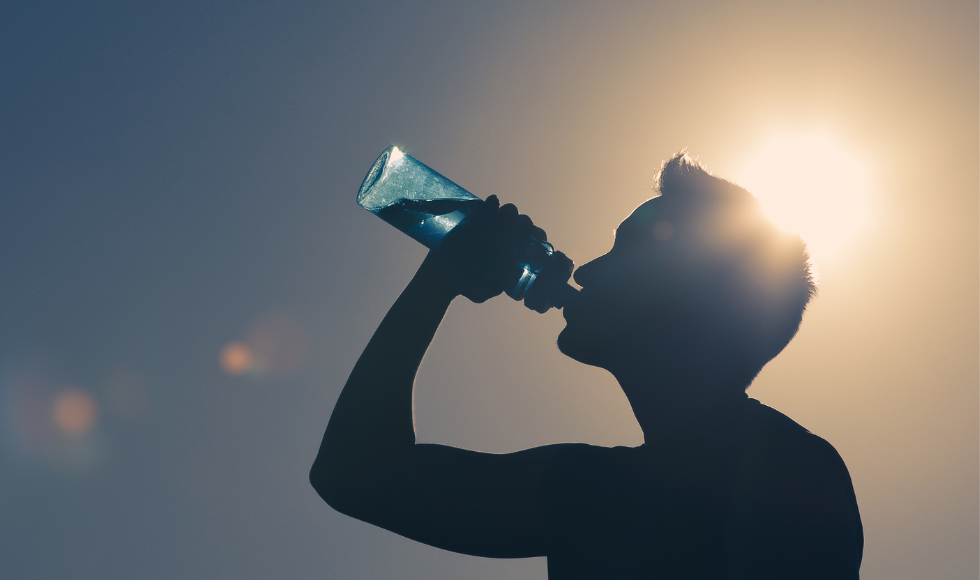Hydration, sun safety and more: Expert advice for a sweltering summer

During the long, hot days of summer, the chances of heat-related illness — like heat exhaustion — rise with the mercury. Fortunately, there are some simple ways to beat the heat.
During the long, hot days of summer, the chances of heat-related illness — like heat exhaustion — rise with the mercury. Fortunately, there are some simple ways to beat the heat.
“When we develop neurological signs and symptoms like feeling more confused or having behavioural changes, we begin to worry about things like heat stroke, which can have serious consequences if untreated,” says physician Erin Gallagher, an assistant professor with the department of Family Medicine.
Gallagher shares some ways to stay cool on sweltering summer days.
Water is your friend
Having a pulse on the forecast is critical in preparing for the day. We choose what to wear based on the weather, so why not our daily water intake?
An easy way to get ahead of a swelter is by hydrating well before you even encounter the hot outdoors, Gallagher says.
“You want to make sure that you come into that day hydrated because as you continue to sweat and lose all that good fluid, you’re going to become dehydrated if you don’t replenish both before and after you are hot.”
Signs of dehydration can be tricky to spot: The things most people are aware of — thirst or dark urine — are in fact, late-stage signs that you’re in need of hydration, Gallagher says. Instead, monitor for dizziness, dry mouth and fatigue.
“If you don’t start the day with a good baseline hydration and you find yourself in a heat situation, you will become tired,” she warns.
“You will have an elevated heart rate. Your blood pressure will drop. You will get what is commonly referred to as heat exhaustion.”
Water offers more than just hydration: Those who can access a pool, beach or sprinkler can find some added relief.
“When we cool off in the water, our body temperature is going from a heat source to a cooler source and that feels good almost immediately,” Gallagher says.
“And then when we come out of the water, we lose even more heat through evaporation.”
Clothes and sunscreen
Dressing for the weather can also make a big difference, Gallagher notes.
“Covering yourself with light, breathable clothes that allow you to continue to dissipate the heat while still covering your skin is ideal during the summer,” she says.
Recommendations for keeping cool can be counter to what is often suggested for protecting your skin. For example, light clothing can be good for keeping cool, but it’s not as good at protecting your skin.
But finding and using the right sunscreen can offset this deficit in clothing protection, Gallagher says.
“Look for sunscreen that is broad spectrum, so that covers both UVA and UVB. We want it to be water resistant, which means that with 40 minutes of activity or being in the water you are still protected.
“You’re also looking for a cream that has an SPF of at least 30.”
Gallagher recommends applying sunscreen 20 minutes before you’re going to need it. She also suggests applying a balm to your lips and wearing hats to block the sun.
Stay home if you can
Extreme heat can be incredibly dangerous, even fatal, especially for certain sections of the population.
Heat-related risks are greatest for older adults, young children, and people with chronic illnesses, according to Health Canada.
While it might not always be practical, staying inside a cool space on unbearably hot days can significantly reduce the odds of a heat illness, Gallagher says.
“It’s not always ideal, but a cool or even shady spot, can greatly cut the heat and provide relief.”

